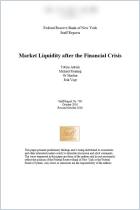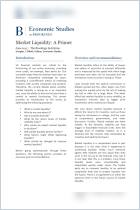
Read or listen offline
Recommendation
A bank’s liquidity can mean the difference between its life and its death. A sudden drop in access to funding can bring down a financial institution in a matter of days, sometimes even hours – as the 2008 demise of Bear Stearns and Lehman Brothers aptly demonstrated. The bank reforms spawned from the 2008 financial crisis tend to focus on amounts and calculations of bank capital, but liquidity remains the most important indicator of bank stability. Economist Rudolf Duttweiler condenses his decades of experience he spent leading treasury functions at top global banks into this comprehensive reference book for those seeking a serious foundation in the complex field of liquidity management. From time to time, he leavens his technical approach – which can be hard to navigate – with a welcome dose of grounded, real-life counsel. getAbstract considers this specialized guide to bank liquidity management a must-read for financial and treasury professionals at all levels of experience.
Take-Aways
About the Author
Economist Rudolf Duttweiler is a professor of bank treasury management at the University of St. Gallen in Switzerland. He led treasury functions at Commerzbank and other European institutions.

















Comment on this summary or 开始讨论